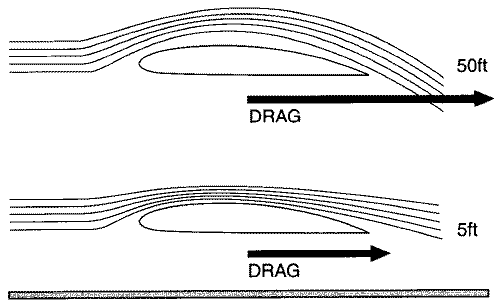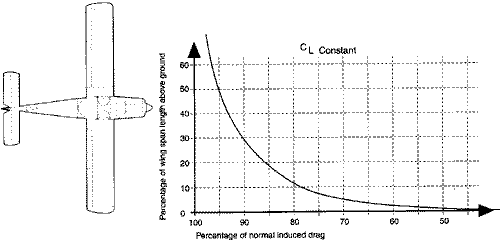What Is Ground Effect?
In a take-off configuration, forcing an aircraft to get airborne at the lowest possible airspeed can lead to uncontrolled flight, preventing the aircraft from climbing above ground effect.

Ground effect occurs when the wing is close to the ground. The proximity of the ground alters the downwash behind the wing, which reduces induced drag and results in the wing having an apparent greater span. Ground effect is at its maximum when the wing is closest to the ground, and decreases in strength until the aircraft is about one wing span above the ground, above which ground effect is negligible.
Because ground effect reduces the drag associated with a given amount of lift, an aircraft in ground effect can remain airborne at a slower airspeed than would otherwise be the case because of the reduced power required. Since the airspeed is on the back of the power curve, there is no excess power to allow for a climb and pitching nose-up will cause a stall.

|